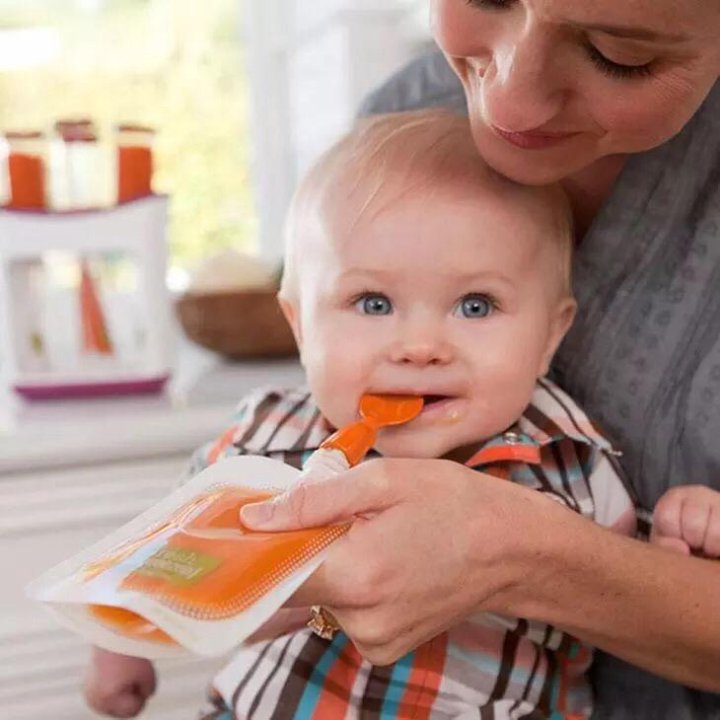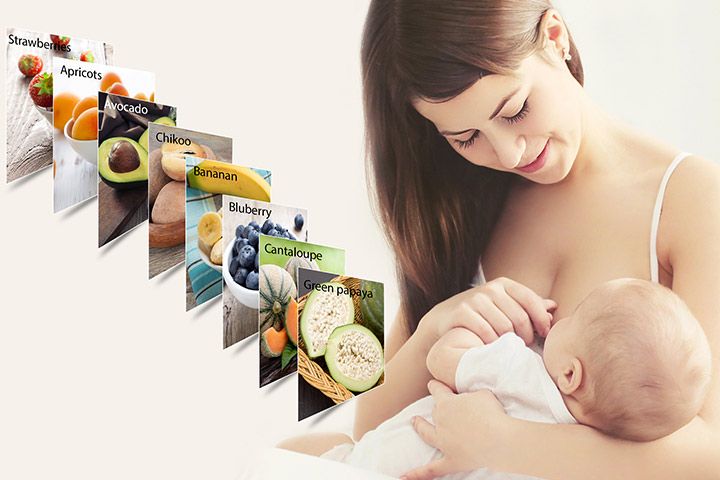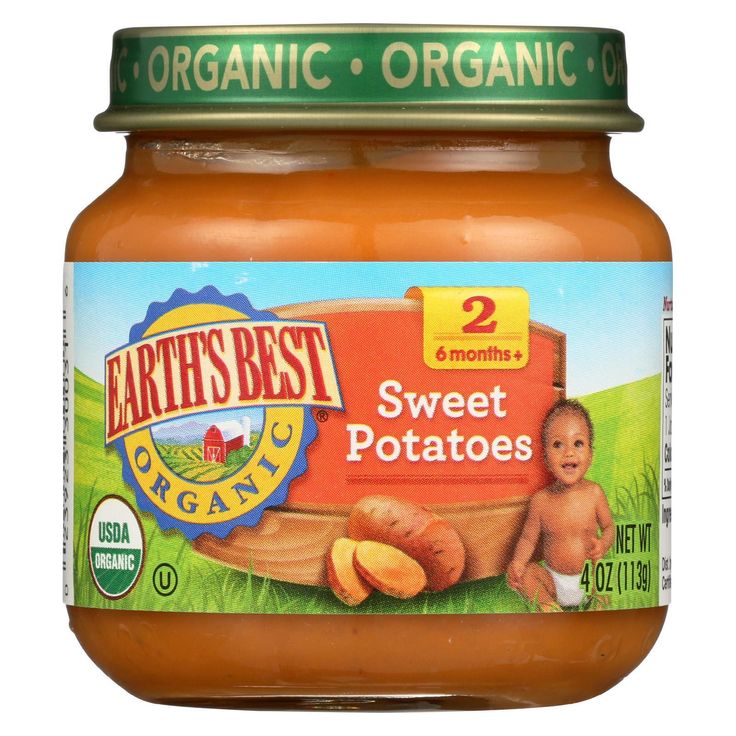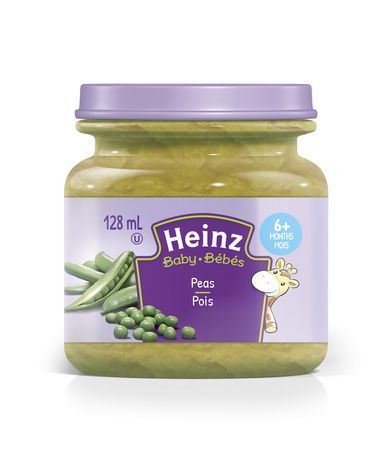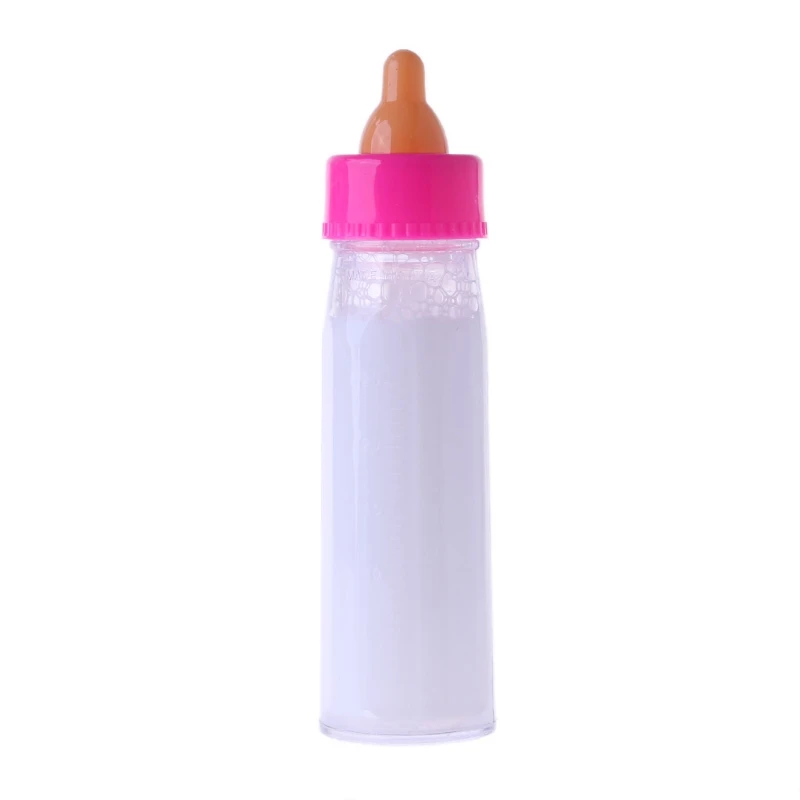Broccoli as first baby food
Why broccoli is one of the best first foods for baby-led weaning
Today I am going to show you exactly how to give your baby broccoli and why it is one of the best first foods for baby-led weaning! I am even going to talk about how to get your fussy eater to love broccoli! It is not an impossible task I promise you!
Over the past few years, I have received countless messages from parents telling me they just couldn’t get their child to eat broccoli. Using the tips and advice below I have helped them not only get their little ones to eat broccoli but to also love it too!
There are many ways to encourage your child to eat their veggies and I promise if you are struggling this is the post for you!
Let’s dive right in (to broccoli)
- Why broccoli is one of the best first foods for baby-led weaning?
- When can babies eat broccoli?
- How to cut broccoli for baby led weaning?
- How do I cook broccoli for my baby?
- For smaller babies starting weaning 6 months to 12 months old
- Babies 12 months to 18 months
- Serve Broccoli with a vitamin C rich food
- How much broccoli is one portion?
- Why do kids hate broccoli so much?
- How do I get my kids to eat broccoli?
- Make broccoli fun!
- Mix it up
- Don’t just hide it
- Be a role model!
- Be patient!
- Try different ways to cook broccoli for kids
Why broccoli is one of the best first foods for baby-led weaning?
If you have been following my page for a while you will know that broccoli is one of my favourite veggies and for very good reason. Broccoli is one of the cheapest and best superfoods on the planet, in my personal opinion! Use your money on the superfoods grown on your doorstep instead of ones imported from faraway lands.
Broccoli is quite literally bursting with goodness from vitamin C, vitamin K to calcium and most importantly iron, which is necessary for the healthy growth and development of your baby. Broccoli also contains a little protein about 2.5g per 100g so you can really see why I call it a true superfood because it really is super! You can read more about the nutrition of broccoli on WebMD.
This year, I started a degree in nutrition and the more I learn, the more I fall in love with vegetables. The quicker you can get your veggies from the farm to your plate the more goodness you get from them. So locally grown is always best!
When can babies eat broccoli?
From 6 months + your baby can eat broccoli, providing it is squashable between your finger and thumb. Broccoli naturally comes with a perfect little handle making it one of the easiest first foods for baby-led weaning. Broccoli is one of the best vegetables for your baby to explore and because of its size and shape.
Broccoli is one of the best vegetables for your baby to explore and because of its size and shape.
How to cut broccoli for baby led weaning?
Babies 6 months – 9 months
As the first food for baby-led weaning, cut the broccoli leaving as much of the floret stem as possible. This ensures that the florets are super easy for your baby to pick up and put to their mouth on their own. A broccoli floret like the ones shown above is the ideal size for a baby from 6 months.
Babies 9 months +
As your baby gets older they will develop their pincher grasp, this is where they are able to pick up smaller pieces of food using their finger and thumb. It is important not to give smaller pieces of soft food to your baby until this develops as it can be really frustrating for them to eat it.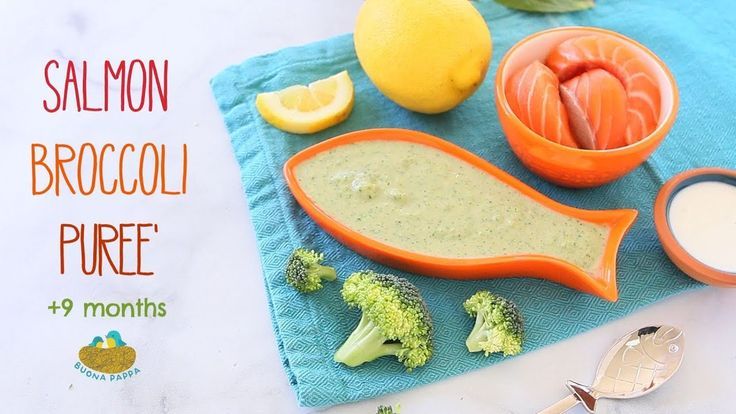 This usually develops around 9 months so try cutting the broccoli into smaller pieces and trying your baby with it. If they find it hard at the beginning mix it up with a regular larger floret and a few smaller pieces.
This usually develops around 9 months so try cutting the broccoli into smaller pieces and trying your baby with it. If they find it hard at the beginning mix it up with a regular larger floret and a few smaller pieces.
How do I cook broccoli for my baby?
For smaller babies starting weaning 6 months to 12 months old- Steam the broccoli until you can squash it between your finger and thumb. The broccoli should be soft but not completely falling apart.
- If you are super nervous, slice the broccoli stem in half and try half at a time.
- Make sure your baby is sitting up, in their highchair, then place one floret in front of your baby and watch! Your baby may not put any in their mouth and for the first few times might just play with the broccoli, but eventually, they will get the hang of it. I promise!
As your baby’s teeth grow and she becomes a better eater, you can cook the broccoli a little less. It shouldn’t be raw or crunchy and should always be safe! Cooking less will keep as many of the nutrients in the broccoli as possible.
It shouldn’t be raw or crunchy and should always be safe! Cooking less will keep as many of the nutrients in the broccoli as possible.
Serve Broccoli with a vitamin C rich food
Broccoli contains non-heme iron which on its own is harder to absorb. To make it easier though, simply serve with a food rich in vitamin C, at the same meal. Serving a vitamin C rich food could simply mean a dessert of raspberries or sliced strawberries. When you give your baby these at the same meal your baby will maximise the amount of iron in their yummy broccoli.
How much broccoli is one portion?
There is no recommendation for portion sizes for babies under the age of 3, however, when your baby is starting weaning, a small floret is plenty for them. Remember your baby gets 75% of all their nutrition from milk so don’t overload their tray with too much food. Start with a small floret served with a portion of protein for example shredded chicken, homemade fish cakes or turkey meatballs, then if your baby seems hungry, offer a little more.
Go by your baby’s cues and trust that they know when they are full.
For children aged between 3-7 the recommended portion of vegetables is 40g. For adults, the portion size is 80g. Roughly speaking that is approximately a handful of broccoli based on the size of the actual person.
Why do kids hate broccoli so much?
Children have twice as many taste buds as us grown-ups which make them really sensitive to bitter tastes. Broccoli contains glucosinolate compounds which have a bitter taste and your child may just be really sensitive to them. It’s not your fault Momma! The bitterness naturally found in broccoli explains why it is one of the vegetables children most likely detest.
By giving your baby bitter tasting vegetables as their first foods for baby-led weaning, you will increase the chances of them liking those vegetables for life!
Then remain consistent and give broccoli to your baby every week. Even when you see them loving it and you are thinking of moving onto the next vegetable. Broccoli should be part of your weekly serving of vegetables for the entire family.
Broccoli should be part of your weekly serving of vegetables for the entire family.
Familiarity is the key here. The more you can get your child to eat broccoli, the more they will love it. Check out my recipes for fussy eaters and don’t despair!
How do I get my kids to eat broccoli?
Did you know that children have twice as many taste buds as grown-ups which makes them really sensitive to bitter tastes? Broccoli contains glucosinolate compounds which have a bitter taste and your child may just be really sensitive to those compounds. This explains why broccoli might be one of the last vegetables your child will touch. Be consistent though! Not liking broccoli is a pretty common thing (just search Google to see what I mean).
This is really common and explains why broccoli is one of the last vegetables eaten an/or the one you will be consistently trying to encourage your child to eat. Your child just might not like it…yet!
Don’t despair though! There are ways to get your kids eating more broccoli without resorting to the broccoli song (been there, done that!).
Make broccoli fun!
I’m sure you just read that and instantly thought – yeah right there is nothing fun about broccoli. But, I kid you not! Broccoli can be made into a super fun food on a child’s plate and it will also help their amazing imagination. Try decorating your child’s plate with broccoli trees and mashed potato clouds, little peas for footprints, or you could try making a seascape like the one I used in my Salmon Fishy Nuggets.
Mix it up
Serve broccoli as part of a grouping of veggies. Frozen mixed vegetables are great for this as your child gets a portion of carrots, broccoli and usually cauliflower altogether.
Don’t just hide it
Sometimes it is o.k to hide vegetable, you might be having a stressful day and you’re thinking ‘I just want my child to eat broccoli’. Or maybe your child is super fussy and hiding them just seems easier. However, I would encourage you, even if you are hiding them, to add a full floret onto their plate too.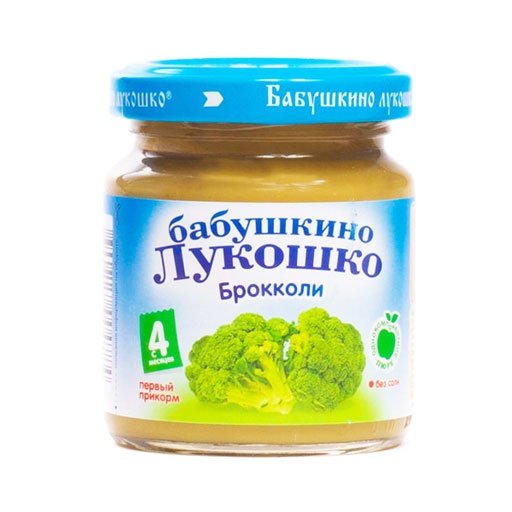 It is a great way for your child to see what broccoli looks like and it really helps if you are eating it too.
It is a great way for your child to see what broccoli looks like and it really helps if you are eating it too.
Be a role model!
Yes parents, eat your broccoli! When your child sees you eating your veggies, they are way more inclined to eat them too.
Be patient!
A real foodie isn’t made in a day. Just like Rome wasn’t built in a day. It takes at LEAST 15 tries for your child to develop a taste for new food. Start on a Sunday, add a floret to their plate, see if they eat it. If they don’t that’s o.k. Do the same again on Wednesday, then perhaps on Friday, make a dish that contains broccoli, like these delicious fritters which you seriously will love yourself! Remember back to that thing of being a role model!. Let your little one know that it is made with broccoli and how delicious it is. Broccoli fritters are amazing and really great for lunchboxes too!
Try different ways to cook broccoli for kids
Steamed broccoli can be bland so try different ways of cooking broccoli.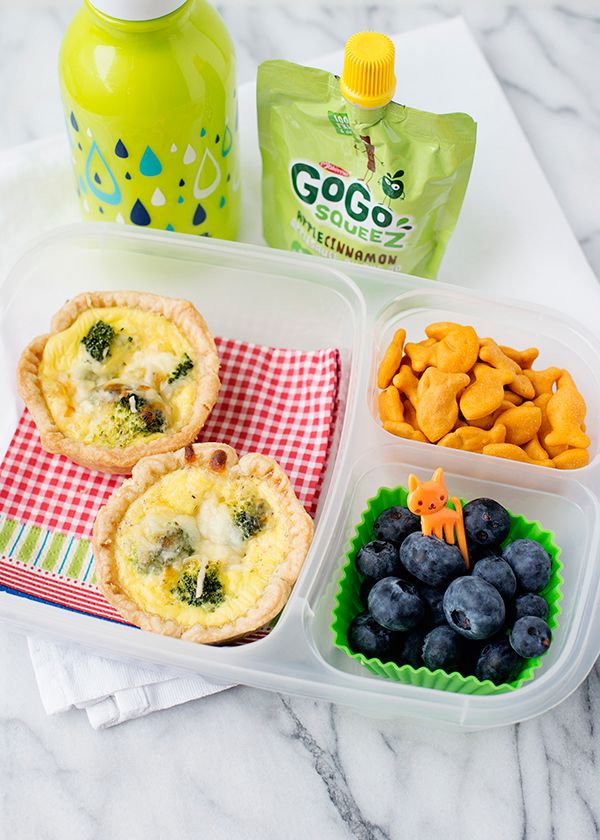 Stir-frying, roasting with some spices or if you are serving steamed try adding a cheesy sauce! This always helped clear plates in my house.
Stir-frying, roasting with some spices or if you are serving steamed try adding a cheesy sauce! This always helped clear plates in my house.
Best Broccoli Recipes for Babies
First foods broccoli first foods for baby led weaning broccoli Fussy eaters Starting baby led weaning Finger foods baby led weaning first foods Freezer Filler Recipes Buddah Bowl Buddha Bowl Toddler Food Baby Bowl Recipes
The Best Broccoli Baby Food Puree (Stage One)
Home » Feeding Style » Baby Food Purees » Stage One » The Best Broccoli Baby Food
This Broccoli Baby Food recipe is a great way to introduce healthy green vegetables into your baby’s diet. A delicious puree that is full of essential vitamins and healthy fats for a growing baby. If you’re looking for an easy green starter puree for your baby, this is it! Great baby food for 4-6 months and older – stage 1 baby food!
Medically reviewed and co-written by Jamie Johnson, Registered Dietitian Nutritionist (RDN), and Lauren Braaten, Pediatric Occupational Therapist (OT).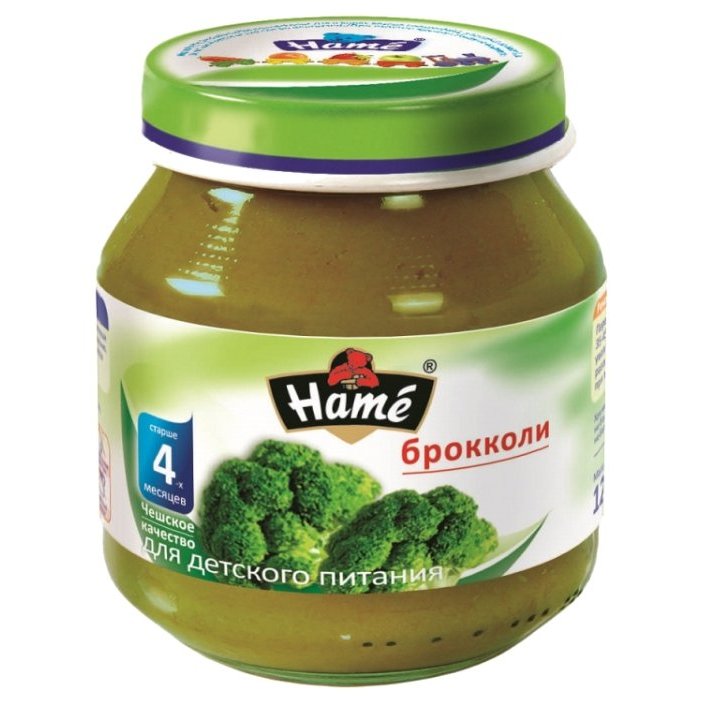
Do you want your child to grow up loving broccoli? Then this puree is a good place to start! 🥦
We start with the main star of the show – broccoli! By gently steaming the broccoli, we are able to preserve its fresh taste and bright green color without getting a too intense broccoli flavor or drab color. I’m also inviting you to try adding in a small amount of peeled apple, pear or white potato. This addition helps give the puree just enough starch and fiber to make a truly creamy and smooth puree that helps balance out the, sometimes, intense broccoli flavor. And for a boost of healthy fats, we are going to drizzle in a little bit of high-quality olive oil.
What this simple recipe gives us is a truly delicious puree that baby is going to dive right into!
First time making homemade baby food? Then, I would suggest that you start by reading my very in-depth Guide on how to Make Homemade Baby Food – which goes over all the important information such as the best cooking tools to have on hand, safe storage, how to know when baby is ready for solids, how to introduce purees, the best first foods for baby, and more! You can also check out my best-selling cookbook for even more information and recipes!
Broccoli Puree Video
Watch this video to see how easy it is to make this Broccoli Puree!
Reasons to Love this Broccoli Baby Food- nutrient-dense – contains fiber, iron, calcium, antioxidants, folate, potassium, vitamins A, C and K
- creamy green puree baby will love
- filled with healthy fats for baby’s growing brain and bones
- 4-6+ months and older
- freezer-friendly
- stage 1 baby food puree
- homemade
Health Benefits of Broccoli
Broccoli has a whole host of health benefits!
- The fiber found in broccoli promotes gut health and heart health.

- It helps support your immune system with the help of vitamin C.
- Broccoli is high in vitamin K, which is important in blood clotting.
- The antioxidants found in broccoli may help protect against certain types of cancers.
- Vitamin A and antioxidants found in broccoli promote eye health.
Ingredients
Make sure to read the recipe card below for full ingredients and instructions!
- Broccoli: Being the start of the show, we need to use fresh broccoli that is bright and green with no mushy parts. You can cut up a head of broccoli or get pre-cut florets. You can also use frozen broccoli in this recipe, but the taste will be slightly more intense.
- Apple: We are going to use one small peeled apple in this recipe to give the puree a smooth consistency. You can also use a small white potato or pear, if you prefer.
 If you want to keep the puree a single ingredient puree, then just leave the apple (potato or pear) out, the puree will be slightly different but still amazing.
If you want to keep the puree a single ingredient puree, then just leave the apple (potato or pear) out, the puree will be slightly different but still amazing. - Olive Oil: For an added boost of healthy fats, we are adding in a little drizzle of a high-quality olive oil. You can omit this if you prefer.
Shopping & Storing Tip: When purchasing broccoli, look for a firm head with dark-green crowns and tightly-closed buds. Broccoli is a hardy, cool-weather vegetable, so it loves your cold refrigerator. Wrap the broccoli in a few dry paper towels, to help wick away any excess moisture, and store in an unsealed plastic bag.
Step-by-Step Instructions- Prep Broccoli: roughly chop a bunch of broccoli and peel and chop one small apple or white potato.
- Steam: place the broccoli and apple/potato into a steamer basket and steam until tender.
- Puree: transfer cooked produce into a blender or food processor and add a drizzle of olive oil.
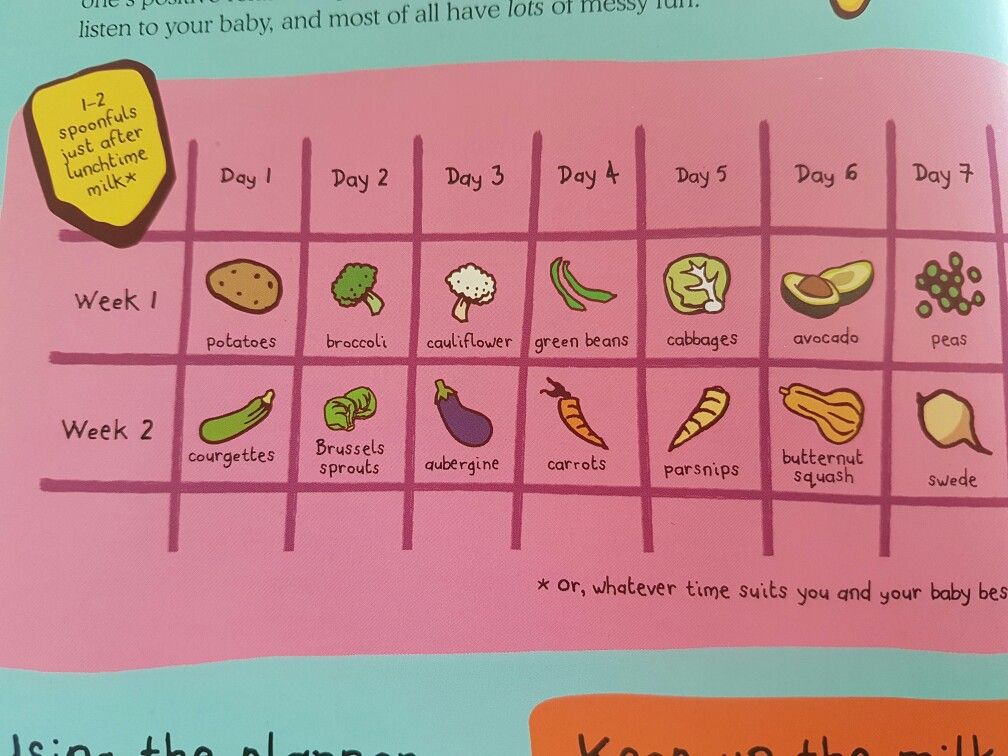 Puree until smooth.
Puree until smooth. - Serve or freeze.
These tools will make it a lot easier for you to make this healthy Broccoli Puree. For more of my favorite kitchen tools make sure to check out my shop.
- Steamer Basket
- Medium Saucepan
- Blender or Food Processor
- Freezer Tray
- Storage Containers for Fridge
- highchair
- suction bowl or baby bowl
- baby spoon
- open lid cup
- bib with catch pocket
While I love the clean flavor of steamed broccoli, there are several different ways you can cook broccoli for baby food.
RoastingPlace broccoli and small chunks of potato onto a baking sheet and roast in the oven at 425 degrees F, for 20-25 minutes or tender when pricked with a fork. Puree in a blender as directed below.
BlanchingBring a medium saucepan filled with water to a boil, add in the potato and cook for 6 minutes, then add in the broccoli and cook for 2 minutes or when tender with pricked with a fork.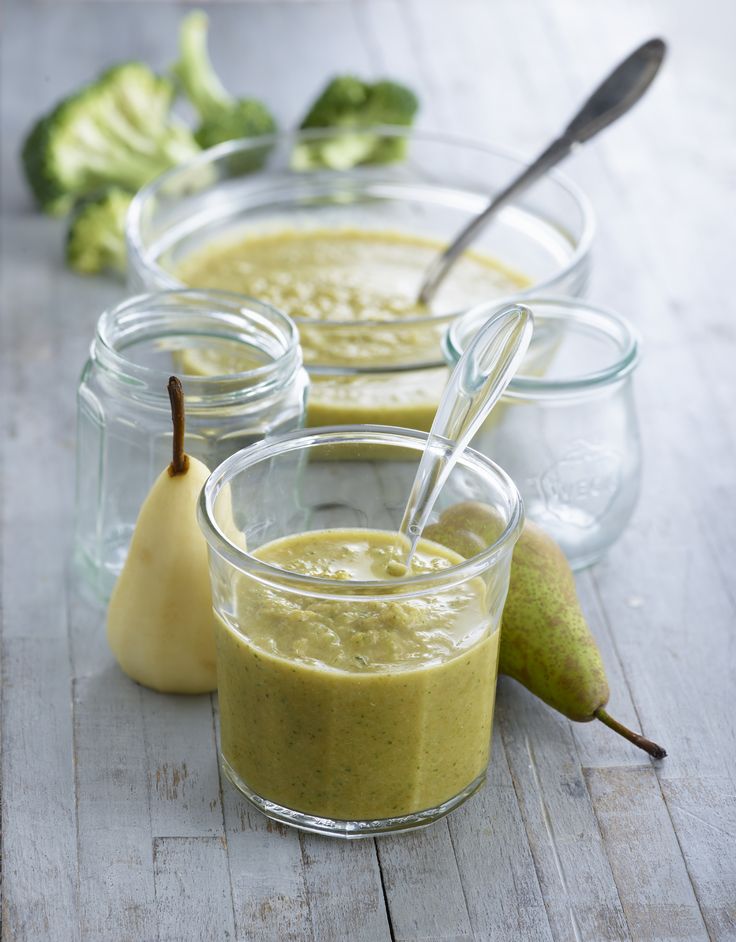 Drain the water, let cool slightly. Puree in a blender as directed below.
Drain the water, let cool slightly. Puree in a blender as directed below.
In this recipe, we are adding a small drizzle of high-quality olive oil into the puree, but feel free to use the following spices instead – chopped chives, mint leaves, chopped cilantro, cumin, or a squeeze of fresh lemon juice.
Tip on Spices: I always recommend adding spices to any baby food puree, but you can add or leave out spices in all of your baby food. You do you! Either way, this puree will taste amazing.
Frequently Asked Questions
When can baby eat broccoli?
Baby can have broccoli as one of their first foods. When a baby can start on solids is determined by their own rate of development, which generally comes between 4-6 months of age. Some of the developmental milestones babies need to reach in order to start solids include: if your baby has solid control of their head and neck, if your baby has doubled in weight, and if your baby is reaching for or opening their mouth when you eat (see my guide here).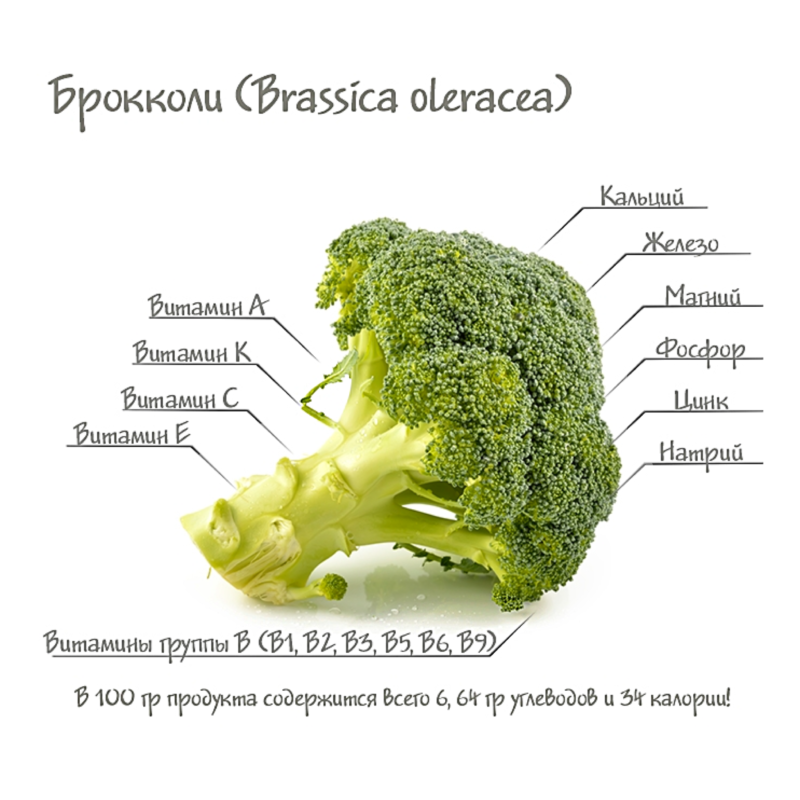 Before you start your baby on purees, you should consult with your pediatrician to make sure your child is developmentally ready.
Before you start your baby on purees, you should consult with your pediatrician to make sure your child is developmentally ready.
Can broccoli be baby’s first food?
Broccoli can 100% be your baby’s first food if you want it to be. It is recommended to wait to introduce the top eight allergen foods to your baby once a few other well-tolerated foods have been introduced, but otherwise, foods can be introduced in any order so choose whatever you are most excited for your baby to have.
Is broccoli a common allergen for baby?
No, broccoli is not a common allergen, however, as with any food, start with a small portion and be aware of any signs that might be an allergic reaction after introducing it.
Does broccoli cause constipation for babies?
Broccoli does not usually cause constipation in babies, and it can actually help alleviate constipation due to its high fiber content.
You can store it in an airtight container in the fridge for up to 4 days.
FreezerThis puree can be frozen for up to 4 months.
- Spoon puree into a freezer storage container – do not overfill.
- Place the lid on the storage container or cover with a piece of saran wrap and label with date and recipe name.
- Place the tray into the freezer and let freeze completely – preferably overnight.
- Pop out the baby food cubes and place in a zip-lock baggie or stasher bag – don’t forget to re-label the baggie or stasher bag for future reference.
Need more information on how to store your baby foods – head over to my Best Baby Food Storage Containers – Plus 6 Tips on Freezing and Thawing post!
Label Tip: Don’t forget to label your purees before you place them in the fridge or freezer with the name of the puree and the date you made it.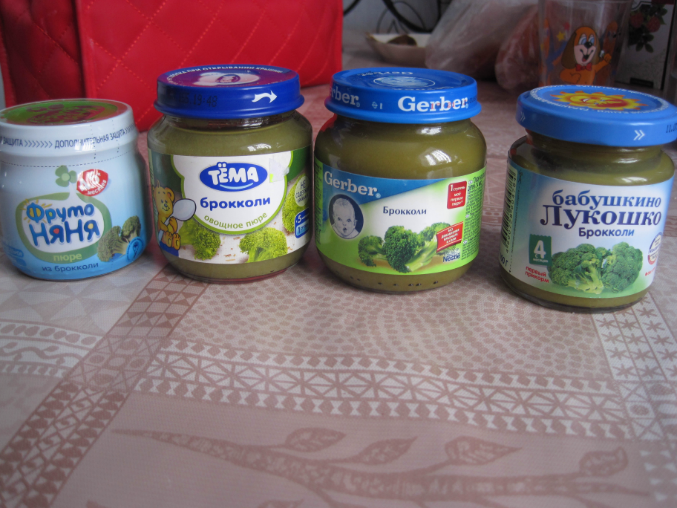 Take it from me, you will completely forget when and what is in your freezer by the end of the week.
Take it from me, you will completely forget when and what is in your freezer by the end of the week.
While Broccoli Baby Food is great by itself, it’s also super easy to mix and match with other nutrient-dense baby food purees. Give these fun flavor combos a try!
- Apples
- Asparagus
- Quinoa Baby Cereal
- Chicken
- White Beans
- Softened Tofu
- Spinach
- Green Beans
- Yogurt
- Mango
Broccoli for Baby-Led Weaning: Carrots are also a great food to serve to your baby whole for baby-led weaning (6+ months) or as a finger food (9+ months). You can always serve baby a combination of purees and finger foods right from the start.
Feeding Tips
- Make sure baby is showing readiness signs for eating – good control of their head and trunk, sitting with minimal assistance, bringing hands or toys to their mouth, and appearing interested in your food when you’re eating.

- Try adding a little seasoning or spice to purees – babies like flavor! Or consider changing the temperature of purees from time to time, to slightly warmed or slightly chilled. Varying these aspects adds to the sensory experience!
- Place a small amount of puree on the tray during spoon feeding, so that your baby can dip their fingers or hands in the puree. Allowing baby to explore foods in this way helps them learn to self-feed and can help them be more willing to try new textures and foods in the future.
- Throwing spoons is a common phase that all babies go through at one point or another. One of the best ways to handle spoon throwing is to ignore it and keep feeding baby as usual (with an extra spoon you already have at the table). If baby ends up also throwing back up spoons #2 AND #3, simply encourage your baby to eat with their hands until they appear to be finished with the meal.
Or watch a shortened version of this video here.
- 2 cups broccoli, chopped into small florets
- 1/2 apple, pear or small white potato peeled and chopped (optional)
- 1 tbsp good quality olive oil (optional)
Prep: In a medium saucepan, bring 2 inches of water to a boil over medium heat.
Steam: Place the broccoli and apple/potato/pear into a steamer basket and place over boiling water, cover and steam for 8-10 minutes or until the broccoli and apple are tender. Reserve the water from the steamer. Let cool slightly.
Transfer: Add the broccoli and apple to a blender or food processor.
Add Olive Oil: Drizzle the olive oil into the blender or food processor.
Blend: Puree on high for 1-2 minutes or until smooth, adding in additional liquid (reserved water, fresh breast milk or formula) in 1/4 cup increments if needed.
 I had to add in 1/4 cup of water to the puree pictured.
I had to add in 1/4 cup of water to the puree pictured.Eat: Serve to your baby or freeze for a later meal.
Age: 4-6 months and up
Yield: roughly 12 ounces
Adding In Spices: Feel free to add in 1 tsp of chopped chives, 2-3 mint leaves, 1 tsp of chopped cilantro, 1/2 tsp cumin or a squeeze of fresh lemon juice.
Blender
Freezer Tray
Tripp Trapp High Chair
Glass Baby Food Jars
Silicone Baby Bibs
Calories: 25kcal, Carbohydrates: 3. 2g, Protein: 0.7g, Fat: 1.2g, Saturated Fat: 0.2g, Sodium: 6mg, Potassium: 106mg, Fiber: 0.7g, Sugar: 0.4g, Calcium: 8mg
Did you make this recipe?
Tag @babyfoode on Instagram and hashtag it #babyfoode!
Email a Friend
Introduction of complementary foods: Broccoli - Encyclopedia Baby food
Levchuk Victoria ©
Broccoli puree is a good choice when introducing complementary foods in the form of one of the first vegetables. This type of cabbage is a super food because it is an excellent source of vitamin C, and also contains beta-carotene, folic acid, iron, potassium and anti-cancer phytonutrients. Broccoli can be a bit difficult for an infant to digest, so the current suggested age for introducing this kale into a baby's diet is around 7 months. Broccoli is best steamed or microwaved, as boiling in water destroys half of its vitamin C content. If the child has any digestive problems, it is best to introduce broccoli later rather than earlier. As always, we recommend that you consult your child's pediatrician on the introduction of solid foods. Broccoli is suitable for finger food. nine0005
As always, we recommend that you consult your child's pediatrician on the introduction of solid foods. Broccoli is suitable for finger food. nine0005
Benefits of broccoli for babies
Contents:
Broccoli contains vitamin C and is an excellent source of soluble fiber. That is why many parents love to add this cabbage to baby food recipes. Soluble fiber is a fiber that helps to loosen the intestines as it passes through the gastrointestinal tract and turns into a gel in the water, which helps lower cholesterol and control blood sugar. Too much soluble fiber in the diet can lead to diarrhea. nine0005
In addition to the nutrients listed above, broccoli also contains phytonutrients, one of which, sulforaphane, is a powerful, natural weapon against cancer. There are many studies that prove that a diet rich in broccoli can help protect the body from cancer and keep the heart and stomach healthy. Broccoli is an annual plant in the cabbage family, dark green in color, somewhat reminiscent of cauliflower.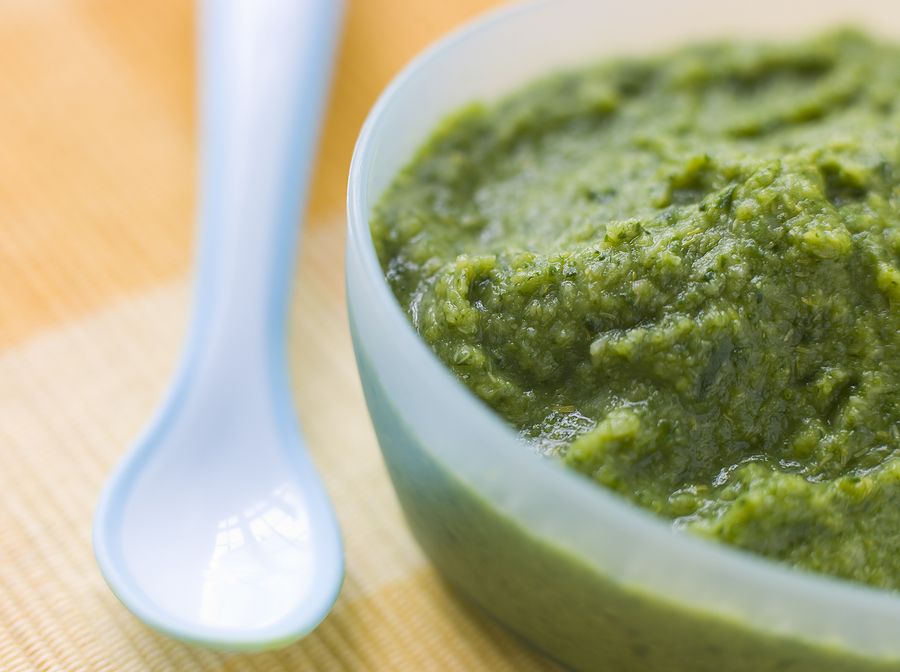
The iron and calcium in broccoli are vital for the development of a healthy baby, as vitamin C, also found in broccoli, makes them more available to the baby's body. This is because vitamin C helps the body absorb calcium and iron efficiently (which is why doctors advise consuming fruit with every meal). nine0005
What's more, broccoli can actually help boost a child's immune system and has anti-inflammatory properties , which means it can help reduce the severity of certain allergic reactions and conditions such as asthma.
And the high content of folic acid in this vegetable will be useful for expectant mothers, because everyone knows that folates significantly reduce the risk of developing birth defects in the unborn child during pregnancy.
Please note that we do not recommend offering broccoli to a child under 6 months of age and as the very first meal due to the possibility of gas formation (see below).
Does broccoli cause gas?
Broccoli - like other vegetables in the cabbage family - is notorious for causing gas, not only in children but in adults too.
Broccoli contains a sugar called raffinose. Our bodies are unable to digest raffinose and when it reaches our intestines, the bacteria that live there begin to ferment, releasing methane gas in the process! nine0005
However, broccoli is too healthy a vegetable to avoid for this reason—instead, we recommend taking steps to minimize this unpleasant side effect:
First, remember that every child is different. others, so it takes a different time to adapt to a new product. Broccoli does not cause severe gas in adults, and some adults eat this vegetable without any consequences, so it's worth giving your baby a chance and introducing him to this cabbage. nine0005
Second, if broccoli is given to children at 6 months of age or older, slight gas formation may not cause discomfort. In children under 6 months, gas formation can lead to great discomfort and even tears, the reason is their immobility, they still do not move much, so the gas lingers in the intestines. Older children are constantly on the move, so introducing broccoli into their diet is easy and simple.
Older children are constantly on the move, so introducing broccoli into their diet is easy and simple.
The choice is, of course, up to the parents, if the child is prone to colic or has difficulty digesting certain foods, then of course it is advisable to wait and introduce broccoli later, closer to 8-9months.
For the first time, offer a small amount of broccoli to a child and increase the dosage of very gradually with each meal, which will allow him to evaluate his reaction and allow the child's body to get used to digesting this vegetable.
It so often happens that repeatedly offering food that produces gas can actually help the body learn to digest it efficiently. Diets of some cultures contain foods that lead to gas formation, such as lentils and beans, but people who eat these foods clearly do not suffer from endless gas formation! Instead, their bodies have learned to process these foods efficiently. nine0005
Some people find that broccoli stalks cause more gas than florets.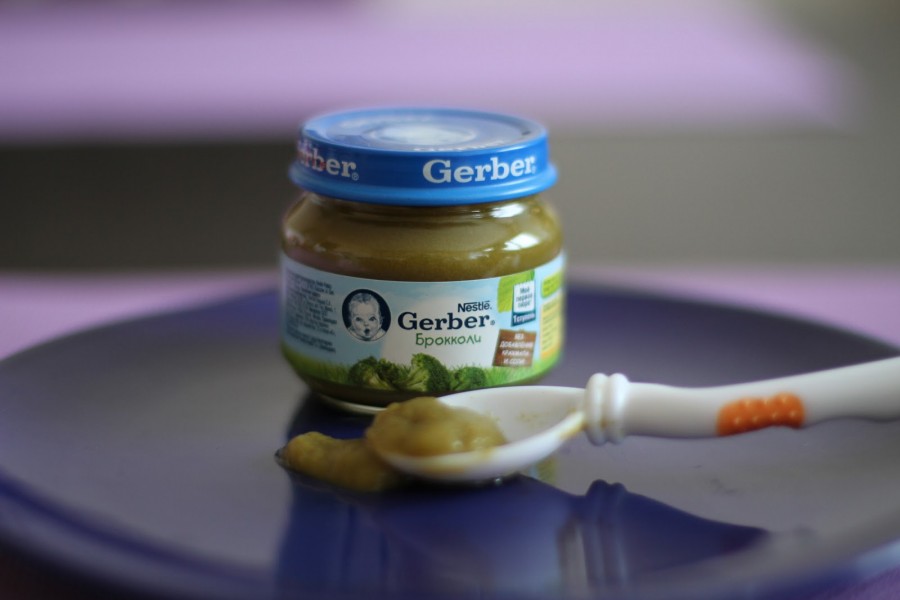 If your child is uncomfortable with gas after mashed broccoli, try not to give the stalks.
If your child is uncomfortable with gas after mashed broccoli, try not to give the stalks.
You can try adding a piece of raw, peeled ginger to the pot when cooking broccoli, or putting some grated ginger or ginger powder in mashed broccoli. Ginger really helps digestion and reduces gas formation - but it should be remembered that broccoli is introduced as the first or third product, and ginger is not included in the baby's diet, so if the child normally tolerates broccoli and only experiences slight discomfort for a couple of days at the beginning of its introduction, it is worth Is it too early to introduce ginger? nine0005
How to select and store broccoli
Broccoli is not one of the "dirty" foods most heavily contaminated with pesticides - purchasing organic food is a personal choice.
We buy broccoli with inflorescences that are evenly colored. They should be dark green or purplish green. If the buds look a little yellow—or worse, if you can see small yellow flowers—the broccoli is overripe. This is bad for two reasons. nine0005
This is bad for two reasons. nine0005
The nutritional value of broccoli decreases over time, so yellow broccoli will be less nutritious than young, green broccoli. In addition, broccoli contains natural sugar, which, as it ripens, turns into a substance called lignin. Lignin is a type of tough fiber - so cooked broccoli with a high lignin content will have a woody texture and an unpleasant strong taste. But young broccoli will be tender and sweet in taste.
Also, inflorescences should not be black or gray spots, contain mold.
Pay attention to the stem and leaves. The leaves should be bright green and the stem should be tight and look like it will burst when bent. Avoid broccoli with elastic stems, this vegetable has begun to wilt.
Always store fresh broccoli in a sealed plastic bag in the refrigerator in the vegetable drawer. It is this storage that allows you to save vitamin C in a vegetable. Fresh broccoli should be stored for about 4 days. You should not store broccoli in the same tray as tomatoes, apples and carrots, as the rate of spoilage of the product may increase.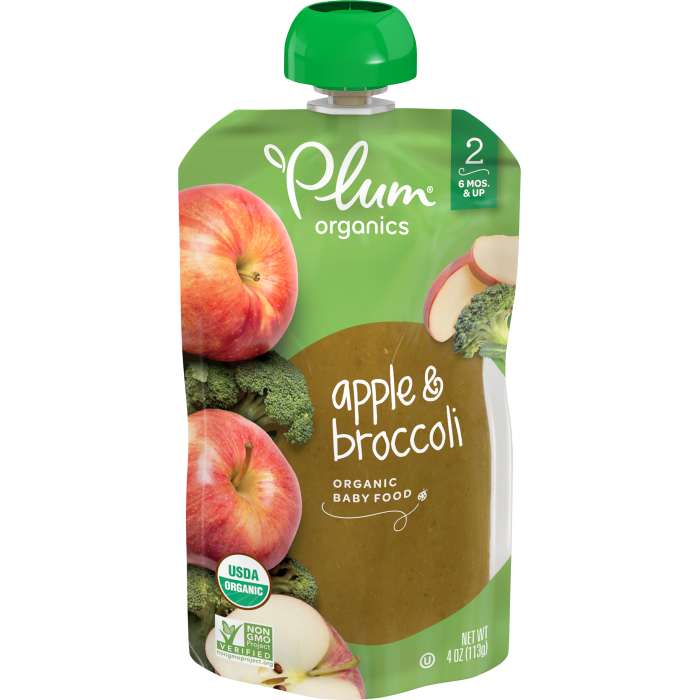 nine0005
nine0005
Do not wash the vegetable before storage (it will rot faster) and try to use it as quickly as possible.
Remember lignin - did we mention it?
Well, this substance can also start to develop in broccoli that has been stored for too long, ruining the vegetable's natural sweetness. Therefore, it is ideal to buy and cook delicious broccoli puree for the baby on the same day. However, you can freeze the vegetable or vegetable puree. Please note that during long-term storage, about 50% of the useful qualities of broccoli are lost, and if you freeze the vegetable fresh, then only 10%. nine0005
The peak season for broccoli is from June to October, although broccoli is available all year round.
Can frozen broccoli be used in baby food recipes?
Broccoli is definitely best eaten fresh, but if really fresh broccoli is not available, frozen can be used. True, when buying, we pay attention to the type of frozen product, since the package can be made up entirely of one broccoli stalk. Of course, the stems contain some nutrients, but the florets contain many more. We also feel the bag well for the presence of ice in it, this suggests that the broccoli may have been repeatedly defrosted and frozen. nine0005
Of course, the stems contain some nutrients, but the florets contain many more. We also feel the bag well for the presence of ice in it, this suggests that the broccoli may have been repeatedly defrosted and frozen. nine0005
How to cook broccoli
Broccoli is commonly used in baby food as a vegetable puree, then as a finger food, and later in many dishes.
It is broccoli that likes to be digested often. Not only will this destroy its taste and texture, it will also reduce its nutritional value.
The nutrients in broccoli are water soluble, which means they leach into the water during the cooking process. It is important to be sure in baby food that vegetables are cooked for the baby in such a way that many of the nutrients are retained. nine0005
Note : How to cook broccoli??? Yes, you can not cook, but eat it raw, which of course retains most of the nutrients, but raw broccoli is too difficult for a child's stomach to digest! And not an unimportant detail, they can choke if it is fresh, not boiled.
It is better to wait with the introduction of raw broccoli until an older age!
However, the good news is that steaming only destroys 20% of the nutrients. Also, some people cook broccoli in an interesting way to preserve nutrients, namely sulforaphane (the main assistant in the fight against cancer cells). They blend raw broccoli with a blender, let it stand for about 40 minutes and then boil it. nine0005
So how do you cook broccoli for kids? Inflorescences and stems are thoroughly washed. The ends of the stems are cut off. The inflorescences are separated from the stems and reduced by separation from each other to the desired size. You can soak for 20 minutes in cold water to get rid of various bugs. Broccoli can be boiled in water, but steamed is best. If we cook in water, then we throw the broccoli inflorescences into boiling water and over low heat for no more than 5-7 minutes, check the readiness of the product with a fork, if it is pierced, then drain the water.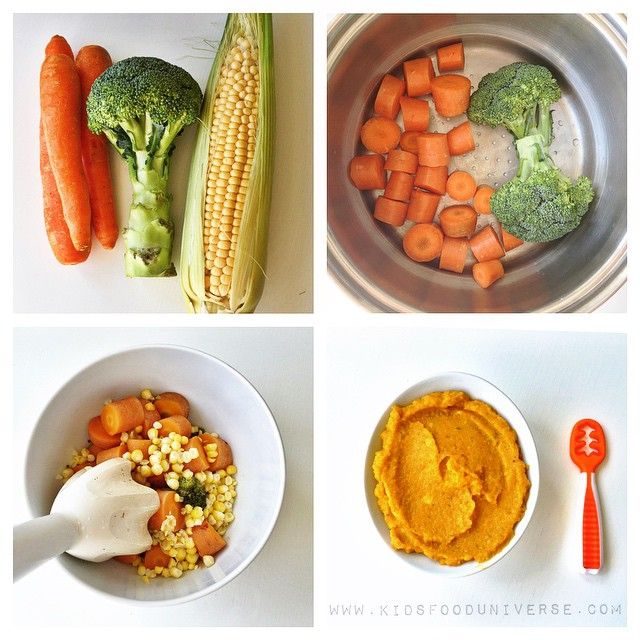 Broccoli vegetable broth can be used to make baby puree. Remember that the stems cook longer than the inflorescences. Therefore, you can first throw the stems into boiling water, and then the inflorescences, or cook only one inflorescence for the baby. Steam broccoli for no more than 15 minutes. nine0005
Broccoli vegetable broth can be used to make baby puree. Remember that the stems cook longer than the inflorescences. Therefore, you can first throw the stems into boiling water, and then the inflorescences, or cook only one inflorescence for the baby. Steam broccoli for no more than 15 minutes. nine0005
Note about broccoli leaves: Most people throw away the leaves, however they are edible and are actually very nutritious. They can be slightly bitter, so they can be added to soups or other dishes in the adult kitchen .
To puree broccoli, place cooked broccoli in a blender and blend until smooth, add a little water, vegetable stock or formula/mother's milk to achieve the desired consistency. nine0005
Frozen broccoli for children is prepared in the same way as fresh broccoli, only it does not need to be thawed and washed. We throw into a double boiler or into boiling water and then, as described above.
You can freeze mashed broccoli if you plan to use it within one month - but it's best to make baby broccoli puree in one go to retain most of all the wonderful nutrients.
If your child doesn't like broccoli on its own, the good news is that it's very easy to mix with other foods, and they may love some of the combinations. nine0005
Here are some ideas...
(depending on the age of the child and the foods introduced into his diet)
- An interesting combination is mashed broccoli with peas, sweet potatoes, zucchini, carrots or cauliflower.
- Broccoli puree with apple or pear puree. This combination may seem nasty, but the baby will love this puree.
- Cut very finely cooked broccoli and toss with your favorite pasta sauce or soup. nine0138
- Instead of boiling broccoli in a little water, try using some beef broth instead - the subtle difference in taste will appeal to your little one!
- Add the raisins to the pot while cooking the broccoli, then whisk it all together. Another weird and wonderful combination, but a big success.
- Stir cooked broccoli with cheese.
- Serve cooked florets like canapés topped with grated cheese for an interesting finger food.
 nine0138
nine0138
Storing broccoli puree
Cooked broccoli puree can be stored in a glass baby food jar or saucepan with a lid or in an airtight container for up to 24 hours. This rule applies to all types of ready-made purees, until the child is 1 year old. When introducing complementary foods into the baby's diet, it is best to cook vegetable purees for one time, especially for the first months, when the baby reaches 8-9 months, many parents begin to cook for 2 times, i.e. the rule is to store in the refrigerator for no more than 24 hours. Freezing mashed broccoli is possible for up to 3 months, but it is better to use it in the first month of freezing. Defrost the puree in the refrigerator overnight. Broccoli purée freezes very well, texture is slightly watery when thawed (rice flakes can be added), best frozen in an ice cube tray. nine0005
How to freeze broccoli puree for baby food
Freezing broccoli for baby food is very easy, the main thing is to choose a good quality vegetable during its growing season in Russia in June-July. Then prepare broccoli for freezing, you need to wash it, divide it into inflorescences, hold it in cold water for about an hour to rid the vegetable of insects and harmful substances. Then you can freeze in 2 ways, like cauliflower:
Then prepare broccoli for freezing, you need to wash it, divide it into inflorescences, hold it in cold water for about an hour to rid the vegetable of insects and harmful substances. Then you can freeze in 2 ways, like cauliflower:
- Dry the broccoli florets, put them in sealed bags of 200-300 grams and freeze with quick freezing. nine0138
- Blanch:
A) Throw broccoli into boiling water for 1-2 minutes, then dip the vegetable into ice water. To preserve the bright color, lemon juice is added to ice water. Next, dry.
B) Steam the broccoli in a double boiler for 3-4 minutes. Then we take it out and dry it.
We freeze only in a dry form with quick freezing (temperature from -18 C to -23 C). We store frozen broccoli for 6-9 months when properly frozen. If kids love the combination of 2 types of cabbage: broccoli and cauliflower, then they can be frozen together. Yes, do not forget to indicate the date of freezing. We put it in small sealed bags, for better freezing and it is more convenient to use small portions when preparing baby food. Re-freezing is not recommended. nine0005
Re-freezing is not recommended. nine0005
The approximate age of introducing broccoli into the diet of children, as we wrote above, is 7 months after zucchini or cauliflower was introduced. Broccoli is a low allergenic food, so it is easily introduced into the baby's diet. However, remember the rule of waiting for about 4-7 days when introducing the product into the baby's diet. Since the baby has already met the first food products, and no allergic reaction has been detected, broccoli is introduced as follows. Below is an example, we interpret it based on our feeding situation. Zucchini and broccoli are boiled separately, and broccoli can be cooked quite a bit, the main thing is that the blender takes a small mass, and the zucchini takes a standard mass that the child eats. Then the parent has 2 options for introducing broccoli into the baby's diet:
- Give 1 teaspoon of broccoli before zucchini, then top with zucchini puree.
- Put 1 teaspoon of broccoli puree into the zucchini and mix, feed the baby as usual.

If the baby spilled out, then on a new product, since the reaction to the zucchini in the baby was not observed. We increase the dosage of broccoli puree according to the table indicated here. Gradually, the proportion of squash puree decreases and the proportion of broccoli increases. Thus, a new product is introduced, as I wrote earlier, the introduction of the first 10 products will take longer than the introduction of the next one. nine0005
broccoli complementary foods
How much broccoli can children eat per day?
broccoli complementary foods Approximately 50 grams of broccoli puree are introduced in the first week. Various sources write that it is better to stick to this particular serving until about a year old, due to the characteristics of broccoli for increased gas formation (consider what I wrote above, a child can easily adapt to broccoli). You can give broccoli to children about 2-3 times a week. After 2 years, you can increase the number of intakes per week to 3-4 times a week, the portion can also be doubled.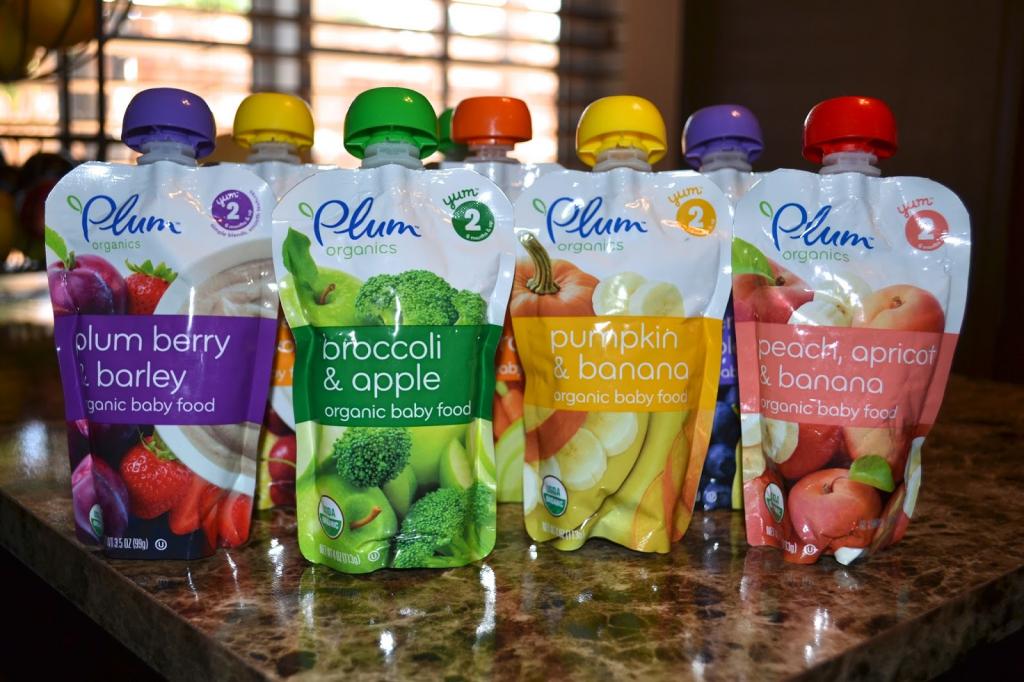 nine0005
nine0005
It is also important to note that approximately broccoli takes about 2 hours to digest, but given the puree-like form, less. And mashed broccoli is best eaten in the morning.
By the way, I found information that children over 2 years old can be given raw broccoli, but it all depends on the child’s ability to digest the product, so in my opinion it’s better to wait until 5 years old, provided that you eat it at home.
If the baby does not accept the taste of broccoli, then mix a small amount of this puree with potatoes, carrots or zucchini. We take into account that the taste of canned puree differs from the taste of home cooking (I wrote about it here). It's also important to note that mashed broccoli may not be to your liking for its consistency or color. For adults, baked broccoli with cheese can be offered as a finger food. nine0005
Fried broccoli should not be given until 3 years of age. In general, it is better not to give fried foods to a child under 3 years old.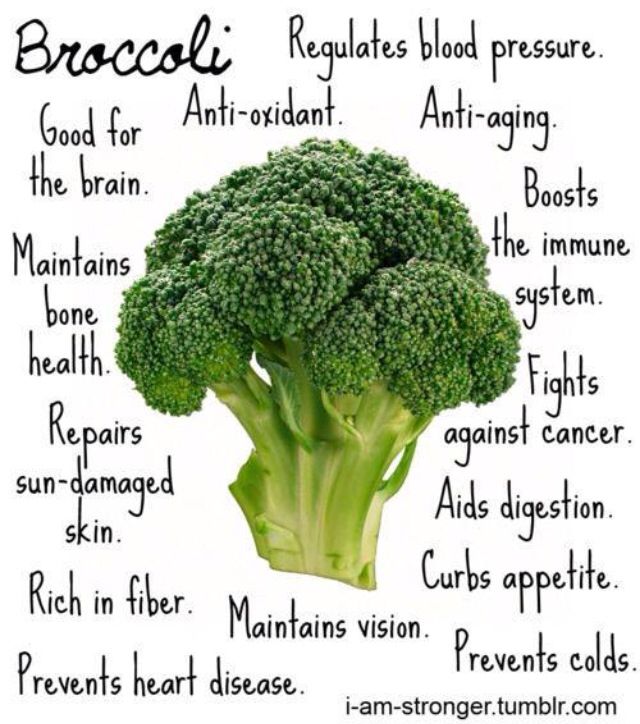 Many recipes can be prepared from this cabbage, not only battered broccoli.
Many recipes can be prepared from this cabbage, not only battered broccoli.
Broccoli Allergy
In complementary foods, broccoli allergy develops when a person's immune system incorrectly determines that the food is potentially harmful and foreign. The immune system produces antibodies to broccoli, known as immunoglobulins. When a person eats broccoli again later, the immune system reacts to the food and releases chemicals that cause the symptoms of an allergic reaction. nine0005
An allergic reaction occurs when broccoli is ingested due to the salicylate content in it, and not because of the cabbage itself. Salicylates are chemicals found in all plants. Even a small amount of salicylates causes allergies. A person with a sensitivity to salicylates is also likely to notice symptoms when eating foods such as apples, avocados, strawberries, cucumbers, zucchini, bell peppers, coffee, and nuts.
It is important to consider that high dosages of salicylates are found in drugs such as aspirin. nine0005
nine0005
Some people are allergic to broccoli because this type of cabbage contains proteins similar to those found in pollen, to which they are allergic. This is called oral allergy syndrome (or fruit pollen allergy syndrome). If there is an allergy to wormwood pollen, then a person may react to broccoli and other plant products. This is a rare cause of pollen food allergy.
Symptoms of broccoli allergy usually occur within minutes to an hour after ingestion of the vegetable or foods containing it. These symptoms include itching or tingling in the mouth, skin rash or hives, swelling of the hands, feet, or lips, difficulty breathing, nausea, vomiting, coughing, and dizziness. Any combination or all of these symptoms can occur as a result of an allergic reaction. A severe allergic reaction, known as anaphylaxis, may also occur. This is a life-threatening reaction that includes throat constriction, difficulty breathing, and dizziness with low blood pressure. nine0005
People who are allergic or intolerant to broccoli and salicylates in their diet may need to avoid a long list of plant foods to reduce symptoms. This can affect quality of life and health. A diet without salicylates can lead to the lack of the following important vitamins and minerals:
This can affect quality of life and health. A diet without salicylates can lead to the lack of the following important vitamins and minerals:
- calcium
- Kaliy
- Vitamins C, D, E
- iodine
- Alpha-Linolenic acid
- Famales
013
There are no special contraindications to the use of broccoli. However, in baby food, it should be added with caution to complementary foods in the following cases:
- If there is an individual intolerance to the product or the patient has been diagnosed with an allergy.
- In diseases of the gastrointestinal tract, hyperacidity, and also if there are diseases of the pancreas.
- It is important to note that broccoli vegetable broth should not be used in complementary foods, as it may contain substances hazardous to the child's body (adenine and guanine). Boiled cabbage is added to the soup at the end. nine0138
How to give broccoli to children?
Give broccoli to children only when cooked. You can steam, boil, or bake. Which way to choose is up to the parents. But I recommend quick steaming as the best method for cooking broccoli. This method provides the best compromise between taste, texture and nutrients. After all, short steaming is a great way to preserve the antioxidant properties and phenol. And while other cooking methods may better preserve nutrients like quercetin and kaempferol, or even vitamin C, I still like steaming the best. nine0005
You can steam, boil, or bake. Which way to choose is up to the parents. But I recommend quick steaming as the best method for cooking broccoli. This method provides the best compromise between taste, texture and nutrients. After all, short steaming is a great way to preserve the antioxidant properties and phenol. And while other cooking methods may better preserve nutrients like quercetin and kaempferol, or even vitamin C, I still like steaming the best. nine0005
It should also be noted that steaming (rather than boiling) broccoli helps retain its nutrients. Roasting broccoli also works, but baking in the oven gives it a tougher texture. For young children, steaming is the safest option as it is gentle on their small gums.
At the beginning of complementary foods, the child is usually given broccoli puree, then the child is gradually transferred to finger food, then broccoli soups can be boiled. nine0005
Broccoli is not often found in Russian cuisine, so basically the most common recipe is battered broccoli.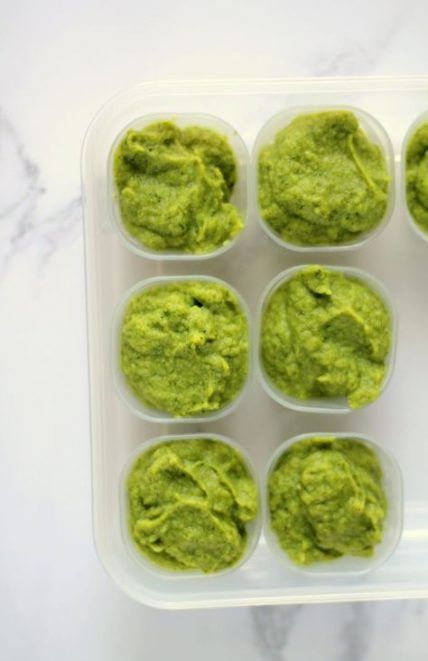 But it's perfect for creamy soups, casseroles, mixed vegetables and salads. Yes, regular finger food will look brighter with broccoli. Therefore, you should not limit yourself to this unique product, you can cook it more often, experiment with spices or cooking methods. Children will love broccoli when presented with different tasty options.
But it's perfect for creamy soups, casseroles, mixed vegetables and salads. Yes, regular finger food will look brighter with broccoli. Therefore, you should not limit yourself to this unique product, you can cook it more often, experiment with spices or cooking methods. Children will love broccoli when presented with different tasty options.
Finger food and broccoli Broccoli, Carrots & Boiled Fish Fillets - Navazhka
Broccoli, steamed to a soft consistency, makes a great first finger food for a baby once they are ready to eat, which is usually around 8-10 months. Broccoli is highly nutritious and the small buds on the buds make it an interesting food for kids to touch and explore.
8 to 9 months: Very delicate steamed florets. It is better to remove the hard stem. Moving from smaller to larger pieces to help your child learn to move the texture around in their mouth. nine0005 Chicken fillet, cucumber, broccoli, apple, Borodinsky black bread, baby cottage cheese as sauce
From 9 to 12 months: At this age, the child begins to develop a pincer grip at the junction of the thumb and forefinger. You can try moving to smaller, bite-sized pieces of broccoli. If it is difficult for a child to collect small pieces, increase the size. Large chunks of food will do just fine - just make sure they're well cooked and tender. This period is the dirtiest, broccoli is easy to smear on the highchair, hair and clothes. nine0005
You can try moving to smaller, bite-sized pieces of broccoli. If it is difficult for a child to collect small pieces, increase the size. Large chunks of food will do just fine - just make sure they're well cooked and tender. This period is the dirtiest, broccoli is easy to smear on the highchair, hair and clothes. nine0005
12 to 24 months : As your child becomes more experienced with eating, you can slightly reduce the time used to simmer or cook broccoli. You can also add broccoli to any dish you like.
Broccoli is perfect for finger food. The bright green color as well as the unusual tree-like appearance will attract children.
Broccoli - a choking hazard to babies?
Although broccoli is not on the list of choking hazards, theoretically any food can be a hazard if not cooked and/or cut properly for a child. To minimize the chance of choking, steam the broccoli florets until soft, then cut each floret in half along the stem. You can also completely cut off the stem if the parents think it's safer.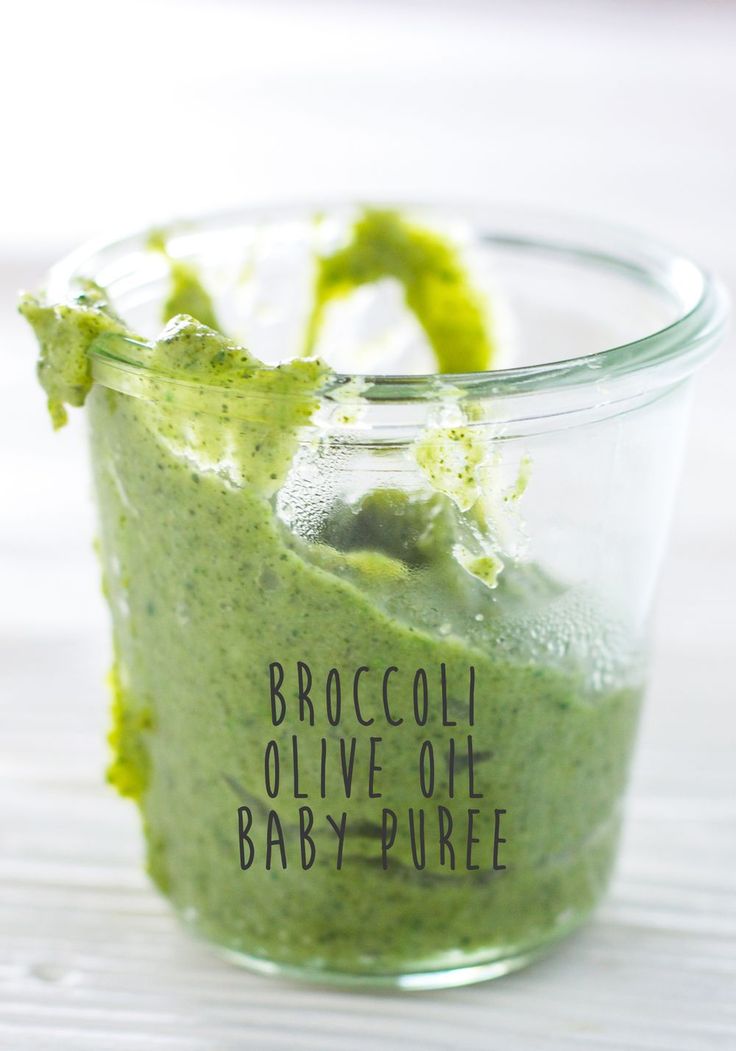 nine0005
nine0005
Broccoli baby food
Cauliflower and broccoli puree Broccoli is considered one of the first hypoallergenic vegetables. Broccoli puree can be easily bought both in its pure form without additives, and assorted vegetables, vegetable-meat, vegetable-fish combinations. The most common combination with broccoli is with rice or with rice and rabbit. I don't know why manufacturers like this combination so much. I draw your attention to the fact that broccoli puree from almost all manufacturers contains water, I also saw an additive in the form of potassium from Frutonyan, and rice flour from Hipp. nine0007 The only children's purees of the brands Egor Ivanych and Useful for children are made without water , containing only the product, as well as according to GOST. Almost all jars are marked at 4-5 months, I draw your attention to the fact that the ideal age of acquaintance with broccoli is about 7 months, since increased gas formation is possible.
Below is a list of brands that make baby food with broccoli.
Gerber
- Green peas-broccoli-zucchini puree, from 6 months, 125 grams
- Rabbit stew with broccoli from 8 months 190 grams
- Puree only broccoli-zucchini, from 6 months, 130 grams (pieces)
- Vegetables with noodles in cream sauce from 8 months 220 grams (pieces)
- Broccoli-rice puree, from 5 months, 125 grams
- Broccoli with rice and rabbit from 8 months 220 grams (pieces) ) nine0003
- Broccoli. My first puree from 4 months 80 grams (rice of rough grinding)
SEMPER
- Italian paste with trout in cream sauce from 11 months of 190 grams (pieces)
- puree from 4 months from 4 months from 4 months from 4 months from 4 months 125 grams
- Broccoli puree with rabbit and rice from 9 months 190 grams (pieces)
Theme
- Beef with broccoli, carrots and rice from 6 months 100 grams0138
Babushkino Lukoshko
- Broccoli puree, from 4 months, 100 grams
- Broaccoli soup with turrets, from 10 months, 190 grams (pieces)
- pure Kabachki-Brookly from 5 months from 5 months from 5 months from 5 months from 5 months from 5 months from 5 months from 5 months from 5 months 100 grams
- Kabakok-Brookoli-Cartofel puree from 5 months 100 grams
Heinz
- Broccoli puree, 80 grams
agric 5 months, 90 ml Frutonyanya Egor Ivanovich is useful for children Broccoli and cauliflower are surely included in everyday life of almost every person who allows vegetables in their diet. They often become the first vegetables with which mothers start feeding their beloved child. Love and reverence are clear and easy to explain: In addition, they are considered low allergenic and are therefore welcome to be included in the baby's first complementary foods.
9000 9000 broccoli:
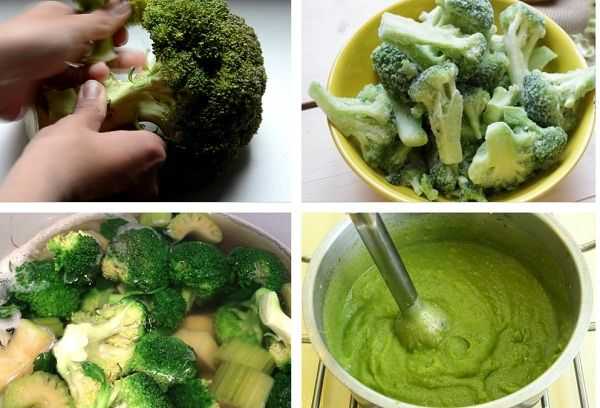
Recipe recommendation "Broccoli and cauliflower puree"
Today we'll talk about how to make the first baby puree yourself.
Cauliflower puree with broccoli for children
CULINARY HUMOR
What is the difference between a drunk man and a woman: A man will drink - he will forget everything. A woman will drink - she will remember everything!
A woman will drink - she will remember everything!
Last reviews
How beautiful it is to laugh...
20-12-2022 Someone
How stereotypically written here. You live in the 21st century. As you wish, so...
Delicious beef tail
24-11-2022 lenok
The chill is amazing. The meat is tender and tasty. Didn't like the broth, greasy... nine0005
Lemon meringue pie
24-11-2022 Jerry
Great recipe turned out great thanks for the recipe...
Chicken sandwich
10-11-2022 Stan Nubarashen
Made 2 sandwiches in 10 minutes. It turned out delicious)) ...
Chocolate peanut sherbet
03-07-2022 Vera
Good afternoon! Is it really only half a glass of sugar for 2 glasses of milk? To me .

